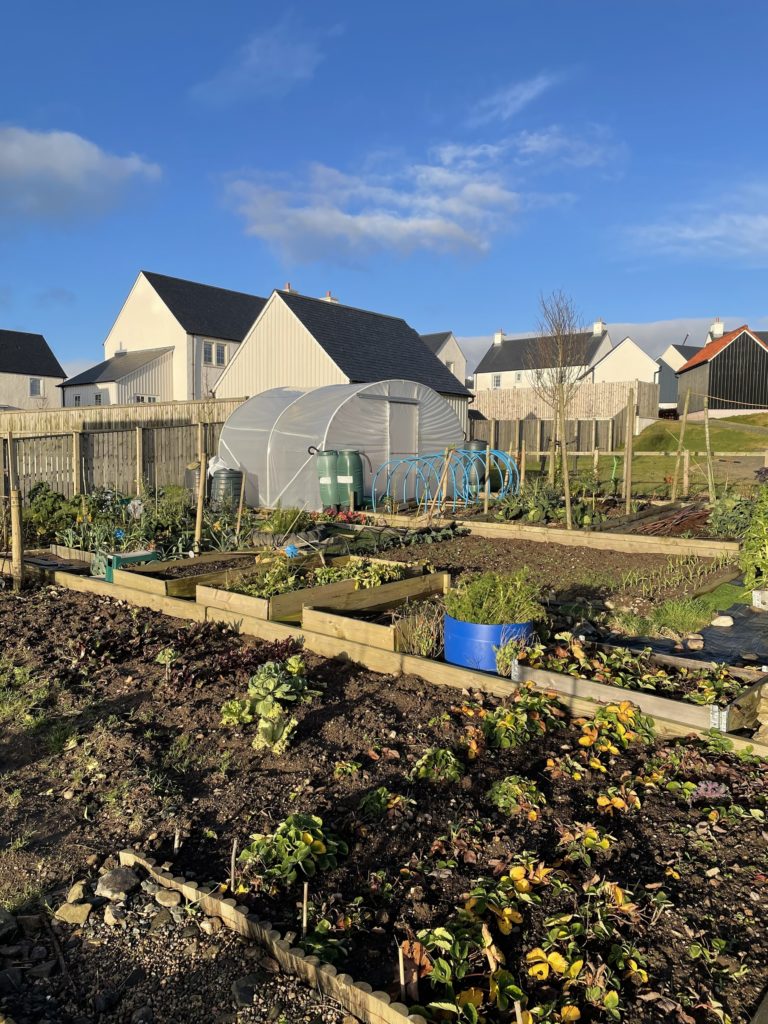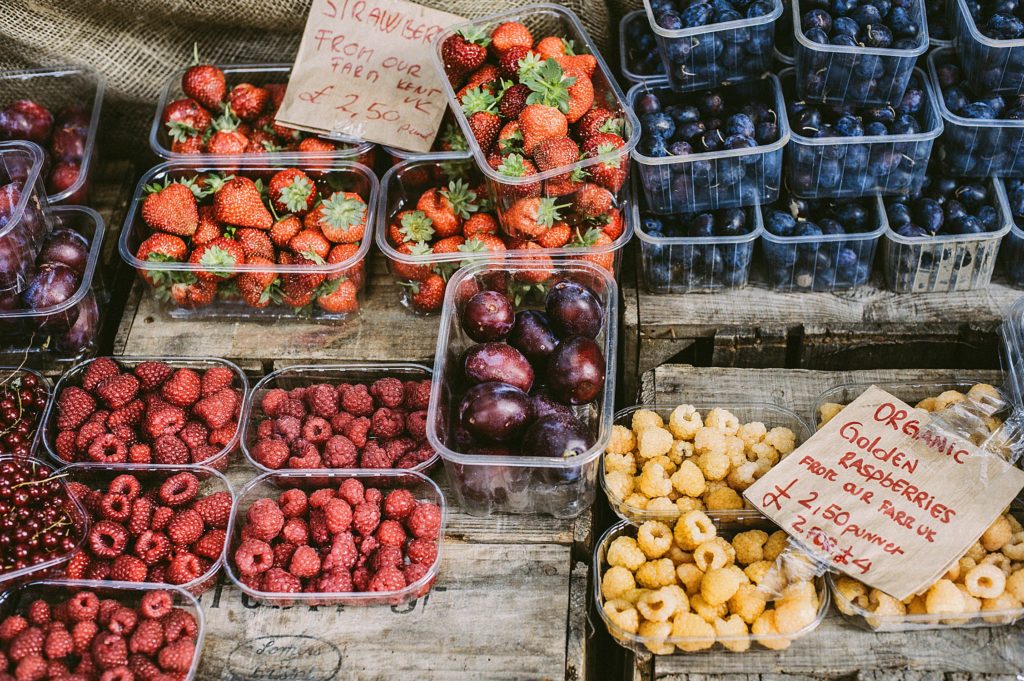Sustainability has always been at the forefront of how Chapelton operates as a community, with the town designed and developed in a way that encourages walking and eco-friendly living including plentiful green spaces and a nature-based playpark – Patey Park.
In this blog post, we explore the range of sustainable initiatives and community-driven efforts that contribute to Chapelton’s goal of creating a greener future, educating the next generation and a more sustainable way of living…
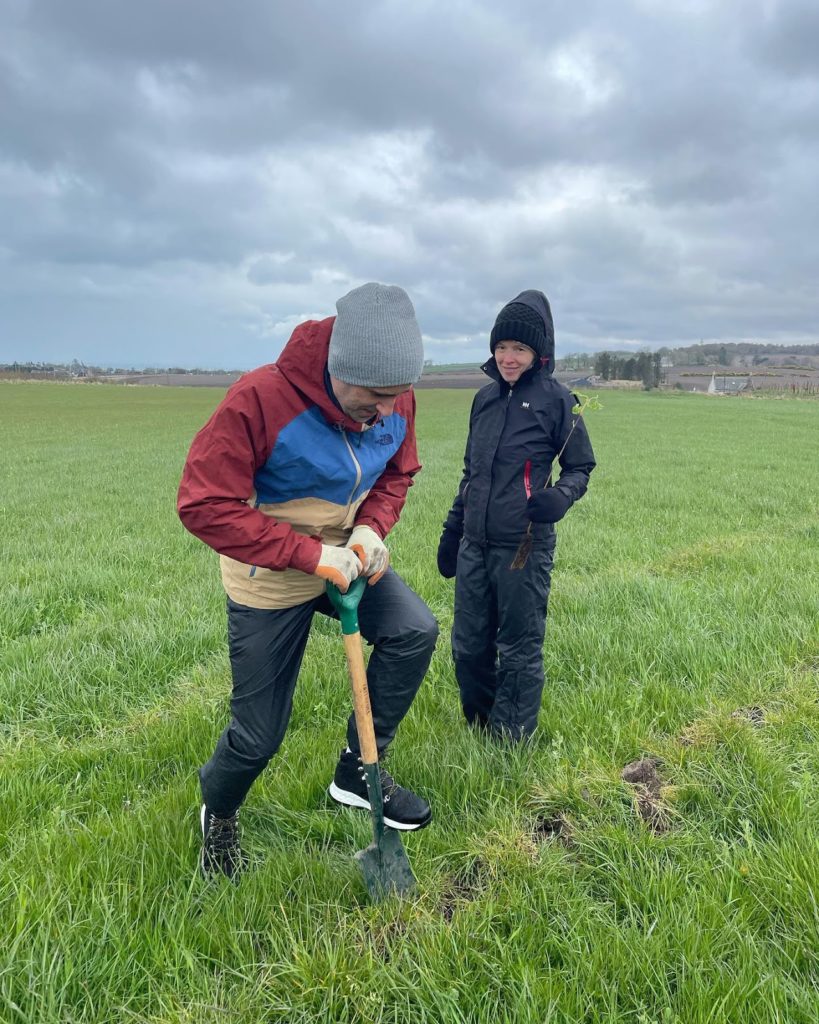
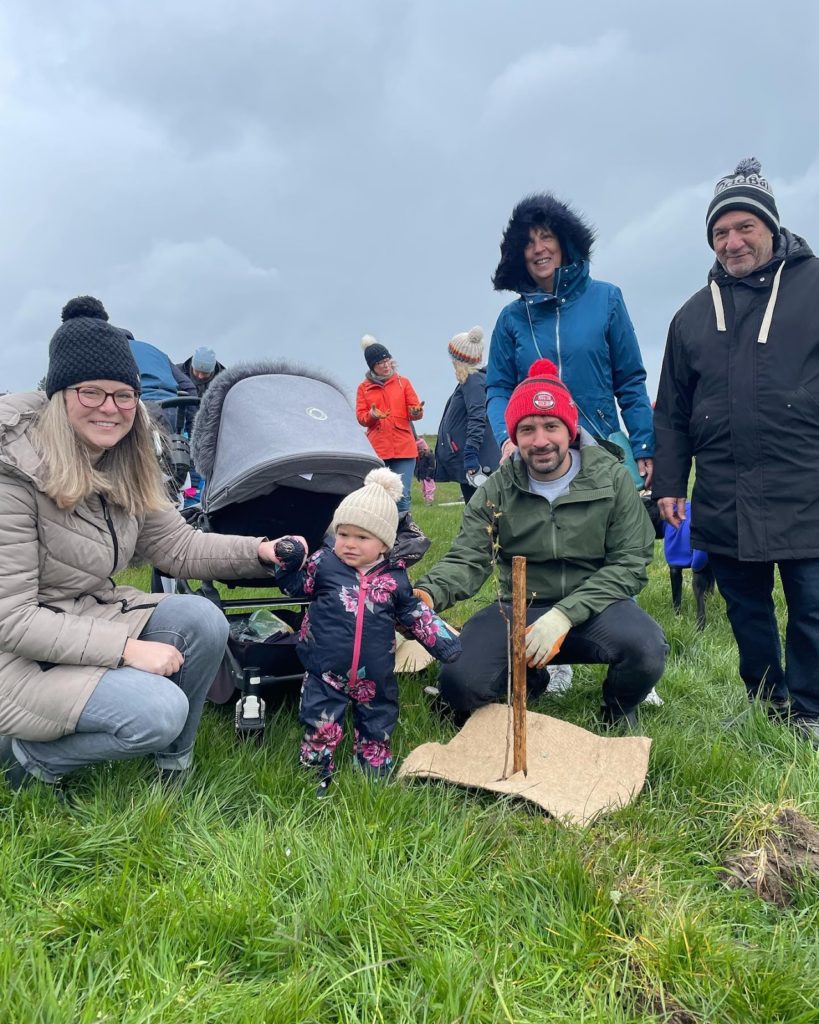
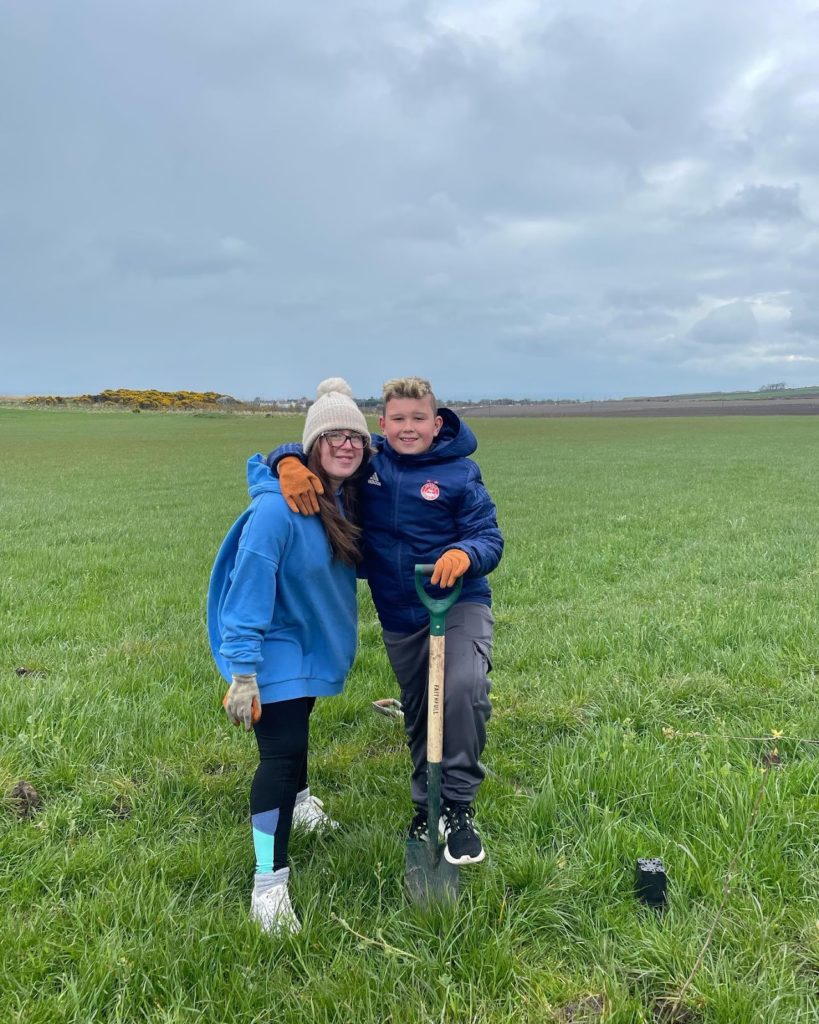
Tree planting
Tree planting has become one of the many initiatives adopted by Chapelton residents and the wider community, designed to help support the conservation of natural resources and sustainable practices while also strengthening the bond throughout the community.
Each spring, new residents are invited to take part in the Chapelton tree planting initiative run by Elsick Development Company.. Prepared with enthusiasm and all the relevant tools, residents are unleashed to plant trees in part of the 10 acres of green space that makes up the Chapelton Community Wood, dividing Chapelton from Newtonhill.
The long-term impact of tree planting stretches far beyond the act of just planting, as it helps to grow the green space throughout the community and carves out a legacy for future generations to enjoy.
Having successfully supported the tree planting initiative since it first started in 2015, Aberdeenshire Council Kincardine and Mearns Ranger, Helen Young, shares more about her experience at Chapelton and her role as a ranger in Aberdeenshire.
“I’ve been a countryside ranger for over 20 years and started my role as the Kincardine and Mearns area Countryside Ranger in 2012.
“Over the years, I’ve had the fantastic opportunity to work with schools, youth groups and community groups on the importance of environmental education and local habitat creation and enhancement. An important part of my job is delivering public events, whether that be raising awareness of our local wildlife or exploring practical conservation opportunities.
“I first started working with Chapelton in 2015, when I was delighted to be invited to assist with the very first residents planting day – the start of Chapelton Community Woodland – and have been returning ever since.
“My role during this initiative involves demonstrating how to successfully plant a tree while also providing the necessary tools, such as spades, lump hammers and gloves.
“I’ve loved joining in on each planting day and look forward to the many future events at Chapelton, it’s such a great way to bring residents together while also helping to create and build a woodland for local people and wildlife to enjoy.”

Bug Hunts
From exploring local habitats to learning about various insect species in their natural environment, bug hunts are a fantastic way to encourage children and participants to connect with nature by educating them on the importance of creating and maintaining our local ecosystems.
Embracing this educational experience, the Chapelton Community Association (CCA) has started organising bug hunts with Helen the Ranger at the Chapelton Community Woodland.
Lasting approximately an hour and a half to two hours long, Helen provides all equipment and identification sheets. Make sure to keep an eye on the CCA’s events to discover future events.

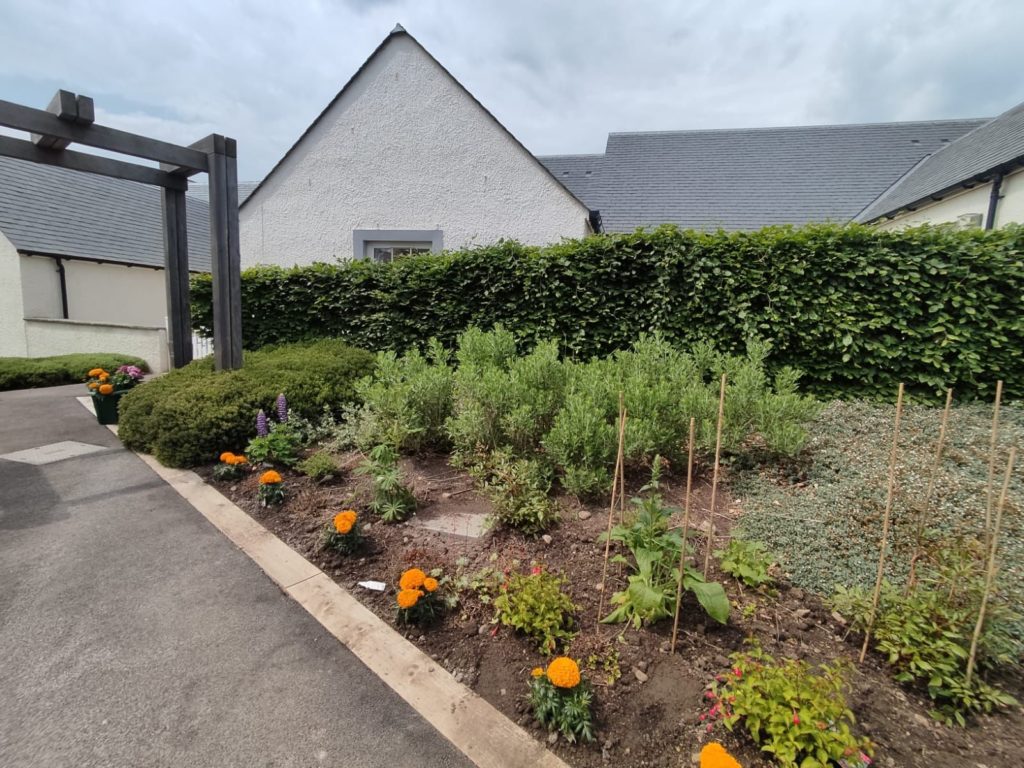

Allotments
The allotments featured at Chapelton have always been a fundamental component of the sustainable framework built into the town. Opening in the summer of 2018, they were constructed on the southern edge of Chapelton and were shortly handed over to the Cairnhill Community Allotment Association for management.
Since then, the committee members have been the driving force behind the creation of the Chapelton Scarecrow Festival, a local event which raises funds towards the construction and maintenance of the Chapelton allotments alongside generating donations for a chosen charity.
Since opening, the popularity of the allotments has skyrocketed, with a waiting list now being created for residents looking for a plot. To accommodate the high demand, Chapelton has produced an exciting plan to expand the number of allotments, submitting the plan to the council for approval.
Brio Retirement Living is also developing some incredible growing gardens positioned at a manageable height for its residents, allowing them to grow fruit, vegetables and flowers. Lending a helping hand, Charlie Craig, from the Cairnhill Community Allotment Association, will be working closely with the team and residents.
For those looking to get involved, keep your eyes peeled as Brio Retirement Living will be starting a gardening club for its local residents run by Morag Stark.

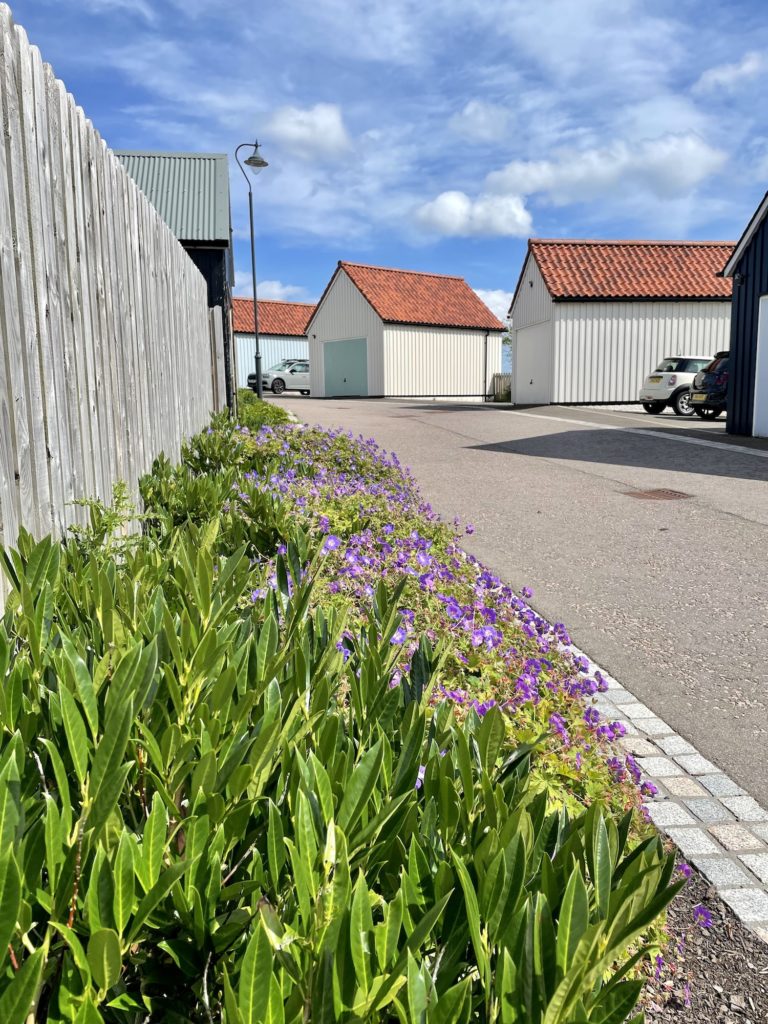
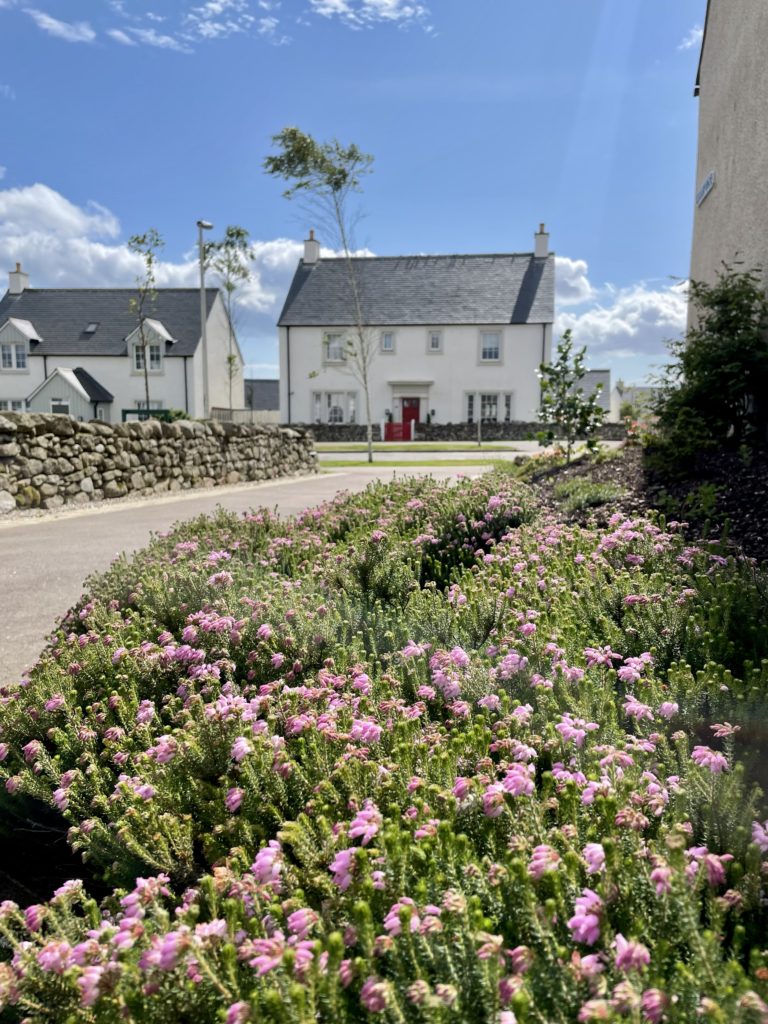
Landscaping
Continuing to prioritise and maintain the town’s numerous green spaces, Chapelton’s talented landscape architect, Janet Benton, explains the future of how this will look in the town.
“The masterplan for Chapelton includes approximately 40% green space featuring a mix of parks, play areas, woods, riparian corridors and the like. We want to create a settlement where the residents have easy access to a range of different spaces in which they can play, exercise, enjoy nature or grow food. The design of the green spaces and landscape features are influenced by the wider Aberdeenshire landscape, giving Chapelton a distinctive identity rooted in the North-east.
“Each neighbourhood has been thoughtfully designed to be a short 5-10 minute walk from the town’s public facilities and amenities including formal and informal green spaces. Throughout the residential areas, we have included a series of informal parks that the residents can access via their gardens, providing a safe space for children to play. Our formal green spaces cater to different age groups including Patey Park, Liddell Park and the allotments located at Pheppie Lane.
As the community continues to grow, the landscaping team has drawn up a plan to keep the tradition of tree planting alive alongside enhancing and growing the green space available within the town.
“Part of our role as landscape architects is to produce the planting proposals for each development as it is designed. We want to ensure that the green spaces satisfy strategic and localised objectives such as creating connected wildlife habitats across the town.
“Tree planting is also an important component throughout all the green spaces in Chapelton and includes everything from formal street tree planting and decorative trees in parks to blocks of native woodland planting in larger parkland areas and along watercourses. The community tree planting to the east of the Causey has been a particular success – it is a popular social event but is also transforming an area of farmland into attractive parkland for the community while also significantly enhancing biodiversity. We want to continue to expand the tree planting initiatives over the years to come, as we celebrate the arrival of new Chapelton residents.”
These initiatives are only the start of Chapelton’s journey towards sustainability as the town and community can look towards planning more environmentally driven events and conducting new eco-friendly projects in the future.

